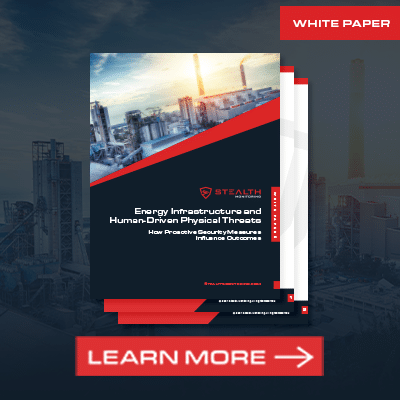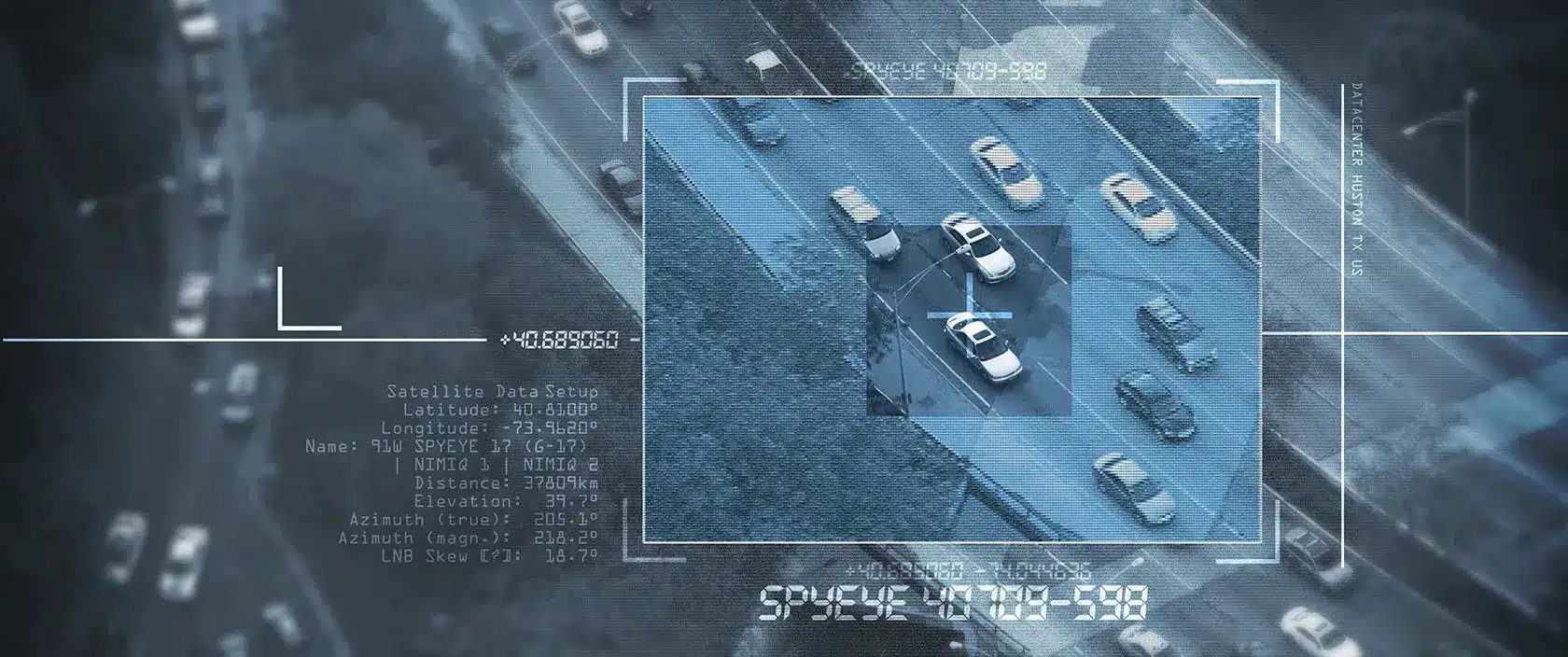The oil and gas industry plays an important role in driving economic growth and sustaining modern society’s energy needs. However, this critical infrastructure faces many security challenges that threaten its operations, personnel safety, and environmental integrity.
From theft and vandalism to cybersecurity threats, the risks confronting oil and gas facilities are multifaceted and require proactive security measures to mitigate effectively.
The infrastructure of oil and gas facilities is a massive, diverse network that encompasses everything from drilling sites and refineries to pipelines and storage depots. These facilities are often located in remote and difficult-to-reach areas, which makes securing them difficult. Each sector of the oil and gas industry has its own specific security needs. Therefore, tailored solutions are necessary to protect against unique vulnerabilities.
In addition, the presence of explosive atmospheres in many oil and gas environments poses additional safety concerns that require specialized security measures to prevent potential hazards. The importance of strong security processes in the business is supported by the need to follow the demanding rules and the possible money loss as a result of a security violation.
Top Oil and Gas Facility Security Issues
Oil and gas facilities span vast areas, including drilling sites, refineries, pipelines, and storage depots. Securing this extensive infrastructure is a significant challenge. Many oil and gas facilities are situated in remote or challenging areas (e.g., offshore platforms, deserts, or Arctic regions).
Securing these isolated locations requires robust communication networks, surveillance, and access control. Each type of facility has unique security requirements. For instance, well pads in upstream exploration need different protection mechanisms than midstream transmission pipelines.
As previously mentioned, oil and gas facilities often contain explosive gases or vapors. These hazardous atmospheres require specialized security solutions. Traditional security systems may not be suitable due to the risk of ignition. Intrinsically safe equipment is essential to prevent sparks or fires.
Any interruptions to oil and gas operations can have severe consequences. Security breaches, whether intentional or accidental, can disrupt production, transportation, and distribution. Ensuring uninterrupted operations while maintaining robust security measures is a delicate balance.
The oil and gas industry needs to balance all of this while complying with strict regulations. Compliance with safety, environmental, and security standards is crucial. Security protocols, too, must align with industry-specific guidelines and legal requirements.
Oil and gas facilities not prepared for incidents could experience substantial financial losses. Theft, vandalism, or sabotage can halt production, which has a bigger hit on revenues. Mitigating economic impact involves proactive security measures and rapid incident response.
Finally, oil and gas operations are growing more digitized. This puts operations at a significant risk for cybersecurity threats, such as cyberattacks, data breaches, and ransomware attacks.
The oil and gas industry faces multifaceted security challenges, necessitating tailored solutions that address the unique characteristics of this sector.
How Proactive Security Cut Risks in an Oil and Gas Facility
Overcoming the security challenges in the oil and gas industry requires a combination of strategic planning, advanced technologies, and industry-specific expertise. Here are some approaches to address these challenges.
Risk assessment and mitigation
Operations are complex and diverse in the oil and gas industry. That said, conducting thorough risk assessments becomes a key tool for identifying vulnerabilities and potential security threats. Risk assessment involves evaluating the physical environment, operational processes, technological systems, and human factors.
The purpose is to determine the likelihood and potential impact of security incidents. Conducting comprehensive risk assessments helps organizations develop tailored strategies to help mitigate risks effectively and enhance overall security resilience.
Systematically identifying vulnerabilities, assessing threats, and implementing targeted mitigation strategies can enhance security resilience and minimize the likelihood and impact of security incidents. The system includes identifying vulnerabilities, assessing threats, creating mitigation strategies, and monitoring and reviewing on an ongoing basis.
Integrated security systems
Integrated security systems play a vital part in protecting and securing oil and gas facilities by providing comprehensive and cohesive security tailored to the unique challenges faced by the industry. These systems combine various security components, including perimeter intrusion detection, access control, video surveillance, remote monitoring, and alarm management, into a unified platform.
One of the primary benefits of an integrated security system is its ability to provide a holistic view of security operations across the facility. By integrating these disparate components, integrated security systems enable real-time monitoring, threat detection, and rapid response capabilities which can enhance the overall security at oil and gas facilities.
By aggregating information from numerous sources, like video feeds, sensor data, and access logs, surveillance systems can provide monitoring operators with an understanding of security threats and vulnerabilities in real-time. This allows operators to identify and respond to security incidents more effectively, minimizing the risk of disruptions to operations.
Perimeter protection
Perimeter security is an important component of integrated security systems for oil and gas facilities. Advanced perimeter intrusion detection systems (PIDS) equipped with fiber optic sensors and ground-based radar systems provide continuous monitoring of facility boundaries. It can detect any unauthorized intrusion attempts and alert security personnel immediately.
In deploying these advanced PIDS technologies as part of an integrated security system, operators can effectively deter potential intruders and help safeguard critical infrastructure.
Access control system
Access control is another key aspect of integrated security systems for oil and gas facilities. Access control systems regulate entry to sensitive areas within the facility. This ensures that only authorized personnel have access to critical assets and infrastructure.
By integrating access control systems with other security components, such as video surveillance and alarm management, operators can enhance security measures and enforce compliance with security protocols more effectively.
Video surveillance with remote monitoring
Video surveillance is a cornerstone of modern security systems, particularly in high-risk environments such as oil and gas facilities. Modern video surveillance systems offer remote monitoring and management capabilities. It supplies operators with a critical tool for monitoring, detecting, and responding to security threats in real time.
Monitoring operators can access live video feeds and control cameras from a centralized location away from the oil and gas facility. This flexibility lets security personnel respond to live security threats, regardless of their physical location.
The security cameras enhance situational awareness as the monitoring operators and video analytics can continuously watch over the entire facility. Monitoring makes it possible to identify security threats quickly and for the operators to follow through with the appropriate response.
Video surveillance cameras are an effective tool for deterring individuals from gaining unauthorized access to protected areas or engaging in illegal behavior. Potential intruders can be deterred from trying to gain unauthorized access, steal, vandalize, or sabotage because they know they are being watched. This proactive security deterrent helps to prevent security incidents before they occur, reducing the risk of disruptions to operations and mitigating potential losses.
In the event of a security incident, video surveillance footage serves as valuable evidence for investigations. As the incident unfolds, the system records and saves video footage. It can be shared with authorities who can use the information to identify perpetrators, determine the sequence of events, and prosecute offenders.
Additionally, video footage can be used for forensic analysis to reconstruct the incident and identify any vulnerabilities in security protocols that may need to be addressed. Some companies use the footage for training, liability issues, and insurance.
Remote video monitoring is an essential tool for improving emergency management planning at oil and gas facilities. These facilities are required to have robust emergency preparedness plans in place, and integrating advanced surveillance technologies can help achieve this goal. With real-time situational awareness, operators can respond quickly to any incidents, whether they are related to operational malfunctions or security breaches. Additionally, remote video monitoring provides a critical layer of intelligence that aligns with regulatory mandates and helps ensure the safety and security of the facility.
Personnel training and awareness
In oil and gas facilities, the human element is just as important as technological assets, such as video cameras, for making sure the facility is protected. Training programs for employees ensure that workers are aware of security threats and understand how to respond.
Training programs provide employees with an understanding of security protocols and procedures specific to their roles and responsibilities. This includes guidelines for access control, perimeter security, emergency response, and reporting suspicious activities. By familiarizing employees with established security protocols, training programs help prepare personnel to respond appropriately to security incidents and mitigate potential risks.
The training should incorporate cybersecurity awareness to educate employees about the importance of cybersecurity protocols, such as password management, phishing awareness, and the safe handling of sensitive information.
Personnel training and awareness is an ongoing process, rather than a one-time deal. Employees should continue with their education and reinforcement of security protocols through regular training sessions, refresher courses, and awareness campaigns.
Organizations can create a culture of security consciousness and vigilance by prioritizing employee security awareness, reducing security breaches and enhancing overall security resilience.
The Most Effective and Proactive Oil and Gas Facility Security
Remote video surveillance offers 24/7 coverage across the entire facility and the area surrounding it. Unlike reactive traditional security systems, remote video surveillance is a proactive oil and gas facility security system that can help deter crime before damage occurs.
Security cameras can help catch compliance errors before anything happens. Thanks to advancements in oil and gas security technology, access control, and remote video surveillance can be cost-effective solutions that yield a fast ROI.
Stealth’s security professionals can support oil and gas facilities. They can analyze the entire network to create a right-sized security solution. To learn more, contact us.
Texas Private Security License Number: B14187
California Alarm Operator License Number: ACO7876
Florida Alarm System Contractor I License Number: EF20001598
Tennessee Alarm Contracting Company License Number: 2294
Virginia Private Security Services Business License Number: 11-19499
Alabama Electronic Security License # 002116
Canada TSBC License: LEL0200704





